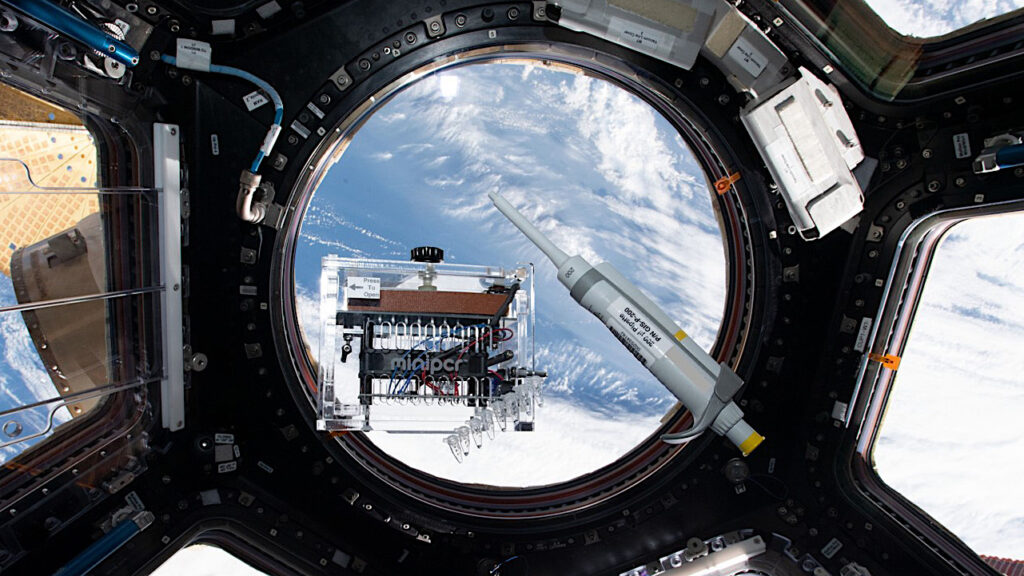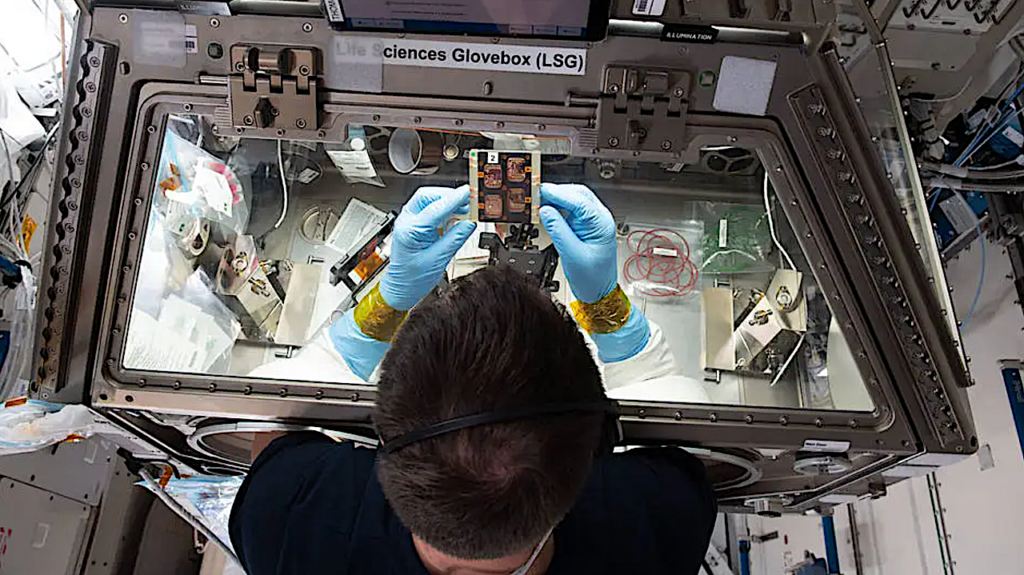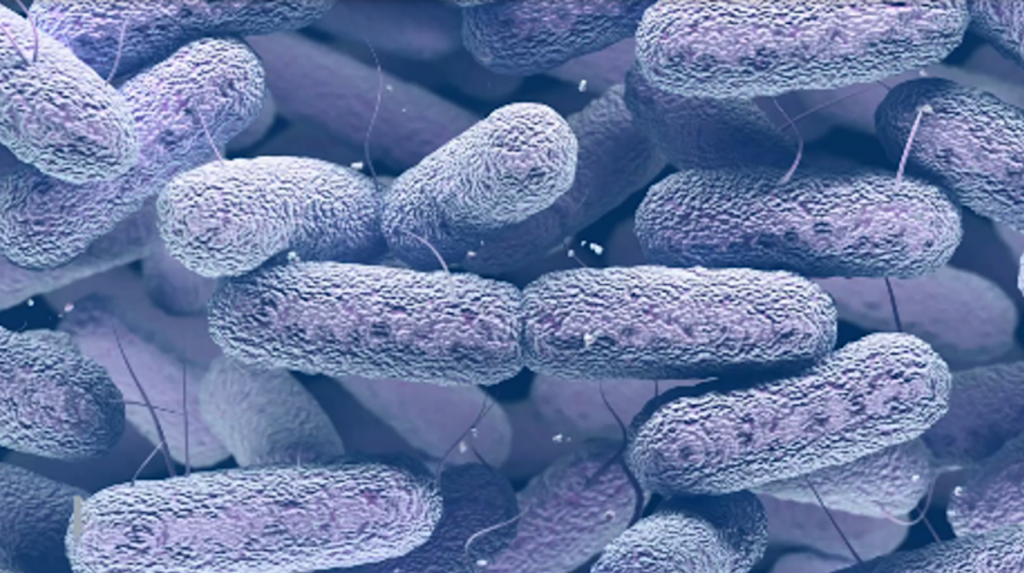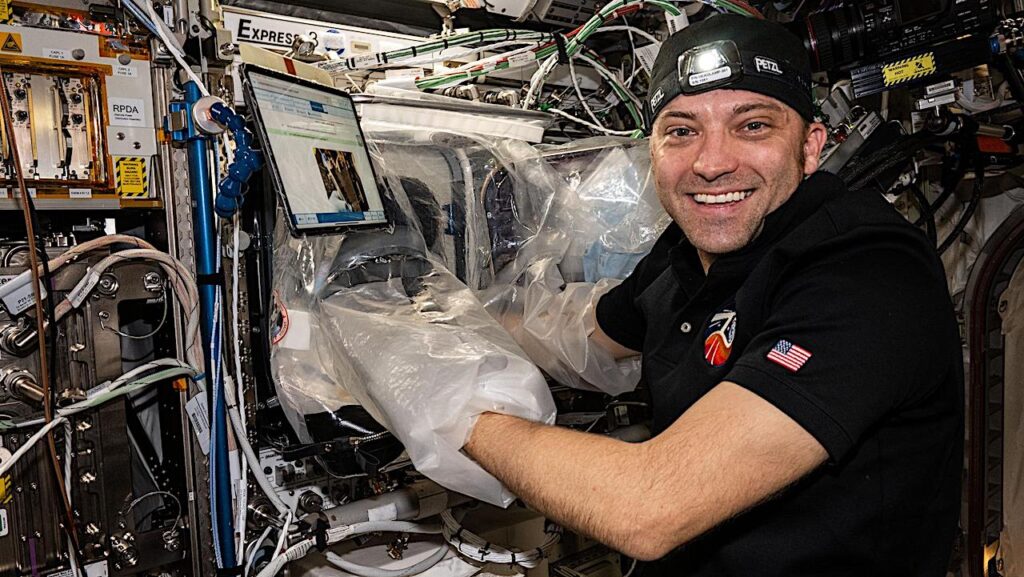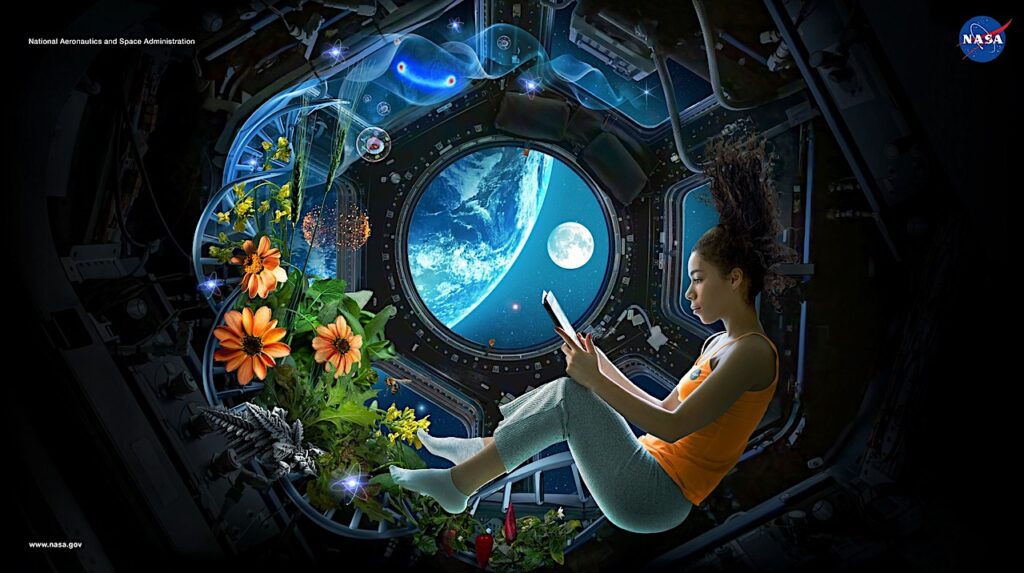NASA Spaceline Current Awareness List #1,098 3 May 2024 (Space Life Science Research Results)

The abstract in PubMed or at the publisher’s site is linked when available and will open in a new window.
In case you missed it: The Spacelab Story: Science Aboard the Shuttle is newly published book by science writer Ben Evans that is part of the Springer Praxis Books Space Exploration series. About this book: “Between 1983 and 1998, Spacelab provided NASA with a vital short-term laboratory in space. Across more than a dozen missions, Spacelab’s pressurized research modules and science pallets supported hundreds of experiments from the life to microgravity sciences, from Earth science to astrophysics and from materials processing to fluid dynamics. This book is a must-read for anybody interested in the science conducted aboard the Shuttle, the experimental precursors of the ISS, and the international politics surrounding NASA’s pioneering space endeavors.” For more information and how to access this book go to https://link.springer.com/book/10.1007/978-3-031-53449-2#about-this-book.
Papers deriving from NASA support:
Zhou M, Riva A, Gauthier ML, Kladde MP, Ferl RJ, Paul AL.Single-molecule long-read methylation profiling reveals regional DNA methylation regulated by Elongator Complex Subunit 2 in Arabidopsis roots experiencing spaceflight.Biol Direct. 2024 Apr 30;19(1):33.PI: A.L. PaulNote: ISS results. This article may be obtained online without charge.
Journal Impact Factor: 5.5
Funding: “This work was supported by NASA grants NNX14AT24G and 80NSSC19K0130 to A-LP and RJF. Development of FENGC was supported by Defense Threat Reduction Agency grant HDTRA1-16-1-0048 awarded to MPK as a co-PI and NIH grant R01 CA155390 awarded to MPK.”- Adamopoulos KI, Sanders LM, Costes SV.NASA GeneLab derived microarray studies of Mus musculus and Homo sapiens organisms in altered gravitational conditions.npj Microgravity. 2024 Apr 26;10:49. Review.Note: GeneLab is available at https://genelab.nasa.gov. This article may be obtained online without charge.
Journal Impact Factor: 5.1
Funding: K.I. Adamopoulos, L.M. Sanders, and S.V. Costes are affiliated with NASA Ames Research Center. - Blackwell Landon L, Miller JCW, Bell ST, Roma PG.When people start getting real: The group living skills survey for extreme work environments.Front Psychol. 2024 Apr 15;15:1348119.PIs: L. Blackwell Landon, S.T. Bell, P.G. RomaNote: This article is part of Research Topic “Optimizing Psychosocial Work Environments and Experiences for People Working in Isolated, Confined, and/or Extreme Conditions” (https://www.frontiersin.org/research-topics/38053/optimizing-psychosocial-work-environments-and-experiences-for-people-working-in-isolated-confined-andor-extreme-conditions/overview) and may be obtained online without charge.
Journal Impact Factor: 3.8
Funding: “The author(s) declare that financial support was received for the research, authorship, and/or publication of this article. PGR led the 2015 NASA Behavioral Health and Performance Team Risk Standardized Measures Workshop as part of NASA grant NNX15AK76A (D. F. Dinges, PI) and NNX13AB39G (PGR, PI). Additional funding for data collection was provided by NASA-directed funding to the Behavioral Health and Performance Laboratory. LBL, JCWM, and PGR were also supported by KBR’s Human Health and Performance Contract NNJ15HK11B through NASA.” - Callaway CW, Flickinger KL, Weissman A, Guyette FX, DeMaio R, Jonsson A, Wu V, Monteleone JL, Prescott P, Birabaharan J, Buysse DJ, Empey PE, Nolin TD, West III RE.Alpha-2-adrenergic agonists reduce resting energy expenditure in humans during external cooling.Temperature. 2024 Apr 21;1-19. Online ahead of print.Note: This article may be obtained online without charge.
Journal Impact Factor: 10.4
Funding: “This work was supported by NASA grant NNX16AO69A to the Translational Research Institute in Space Health at Baylor College of Medicine, NIH grant S10OD028540 for ‘Small Molecule Biomarker Core: TSQ Altis LC-MS/MS,’ and NIH grant UL1TR001857 the University of Pittsburgh Clinical and Translational Science Institute for ‘Pitt+Me.'” - Clark TK, Galvan-Garza RC, Merfeld DM.Intra-individual consistency of vestibular perceptual thresholds.Atten Percept Psychophys. 2024 Apr 24.PI: T.K. Clark/NSBRIJournal Impact Factor: 1.7
Funding: “This research was supported by that National Space Biomedical Research Institute (NSBRI) through NASA Grant NCC 9-58 (T.K. Clark), via National Institute of Deafness and Other Communication Disorders Grants R01DC04158 and R01DC014924 (D.M. Merfeld), and a NASA Space Technology Research Fellowship, Grant no. NNX13AM68H (R.C. Galvan-Garza).” - Welhaven HD, Welfley AH, Brahmachary P, Bergstrom AR, Houske E, Glimm M, Bothner B, Hahn AK, June RK.Metabolomic profiles and pathways in osteoarthritic human cartilage: A comparative analysis with healthy cartilage.Metabolites. 2024 Mar 25;14(4):183.Note: This article is part of Section “Cell Metabolism” (https://www.mdpi.com/journal/metabolites/sections/cell-metabolism) and may be obtained online without charge.
Journal Impact Factor: 4.1
Funding: “This study was funded by the National Institutes of Health under the Award Numbers R01AR073964 and R01AR081489 (R.K.J.), the National Science Foundation under the Award Number CMMI 1554708 (R.K.J.), the M.J. Murdock Charitable Trust under the Award Numbers FSU-2017207 and NS-202016444 (A.K.H.), and the National Aeronautics and Space Administration under the Award Number 80NSSC20M0042 (A.K.H.).”
Other papers of interest:
- Akinsuyi OS, Xhumari J, Ojeda A, Roesch LFW.Gut permeability among astronauts during space missions.Life Sci Space Res (Amst). 2024 May;41:171-80. Review.Note: This article may be obtained online without charge.
- Ahmed SS, Goswami N, Sirek A, Green DA, Winnard A, Fiebig L, Weber T.Systematic review of the effectiveness of standalone passive countermeasures on microgravity-induced physiologic deconditioning.npj Microgravity. 2024 Apr 25;10:48. Review.Note: This article may be obtained online without charge.
- Vora PM, Prabhu S.Exploring the influence of microgravity on chemotherapeutic drug response in cancer: Unveiling new perspectives.J Cell Mol Med. 2024 May 2;28(9):e18347. Review. Online ahead of print.Note: This article may be obtained online without charge.
- Han Y, Barasa P, Zeger L, Salomonsson SB, Zanotti F, Egli M, Zavan B, Trentini M, Florin G, Vaerneus A, Aldskogius H, Fredriksson R, Kozlova EN.Effects of microgravity on neural crest stem cells.Front Neurosci. 2024 Mar 26;18:1379076.Note: From the abstract: “Exposure to microgravity (μg) results in a range of systemic changes in the organism, but may also have beneficial cellular effects. In a previous study, we detected increased proliferation capacity and upregulation of genes related to proliferation and survival in boundary cap neural crest stem cells (BC) after MASER14 sounding rocket flight compared to ground-based controls. However, whether these changes were due to μg or hypergravity was not clarified. In the current MASER15 experiment BCs were exposed simultaneously to μg and 1 g conditions provided by an onboard centrifuge.” This article may be obtained online without charge.
- Krüger J, Richter P, Stoltze J, Prasad B, Strauch SM, Krüger M, Nasir A, Lebert M.Changes in gravitaxis and gene-expression in an Euglena gracilis culture over time.Biomolecules. 2024 Mar 9;14(3):327.Note: This article is part of Special Issue “Effects of Weightlessness on Molecular Changes in Cellular Organisms, Animals and Plants” (https://www.mdpi.com/journal/biomolecules/special_issues/5JR4HV8X19). The Special Issue also includes articles from previous Current Awareness Lists #1,035 https://doi.org/10.3390/biom13020201 and https://doi.org/10.3390/biom13020189; #1,038 https://doi.org/10.3390/biom13020371; #1,084 https://doi.org/10.3390/biom14010065; and #1,095 https://doi.org/10.3390/biom14040446. Additional articles will be forthcoming and may be found in the link to the Special Issue. This article may be obtained online without charge.
- Bhat AR, Arya AK, Bhopale VM, Imtiyaz Z, Xu S, Bedir D, Thom SR.Persistent neuroinflammation and functional deficits in a murine model of decompression sickness.J Appl Physiol (1985). 2024 Apr 25. Online ahead of print.
- Henry AR, Miller ND, Spalding EP.QTL [quantitative trait loci] for the kinematic traits that define the Arabidopsis root elongation zone and their relationship to gravitropism.Plants. 2024 Apr 25;13(9):1189.Note: This article is part of Special Issue “Molecular Mechanisms Underlying Root Growth Behavior” (https://www.mdpi.com/journal/plants/special_issues/03L84PWSAG) and may be obtained online without charge.
- Minoretti P, Fortuna G, Lavdas K, D’Acquino D.Potential biomarkers of resilience to microgravity hazards in astronauts.Cureus. 2024 Mar 29;16(3):e57173. Review.
- Nisar H, Sanchidrián González PM, Labonté FM, Schmitz C, Roggan MD, Kronenberg J, Konda B, Chevalier F, Hellweg CE.NF-κB in the radiation response of A549 non-small cell lung cancer cells to x-rays and carbon ions under hypoxia.Int J Mol Sci. 2024 Apr 19;25(8).Note: This article is part of Section “Molecular Oncology” (https://www.mdpi.com/journal/ijms/sections/molecular_oncology) and may be obtained online without charge.
- Xiang C, Fan X, Bai D, Lv K, Lei X.A resting-state EEG dataset for sleep deprivation.Sci Data. 2024 Apr 24;11:427.Note: This article may be obtained online without charge.
Astrobiology, space biology, space medicine,


